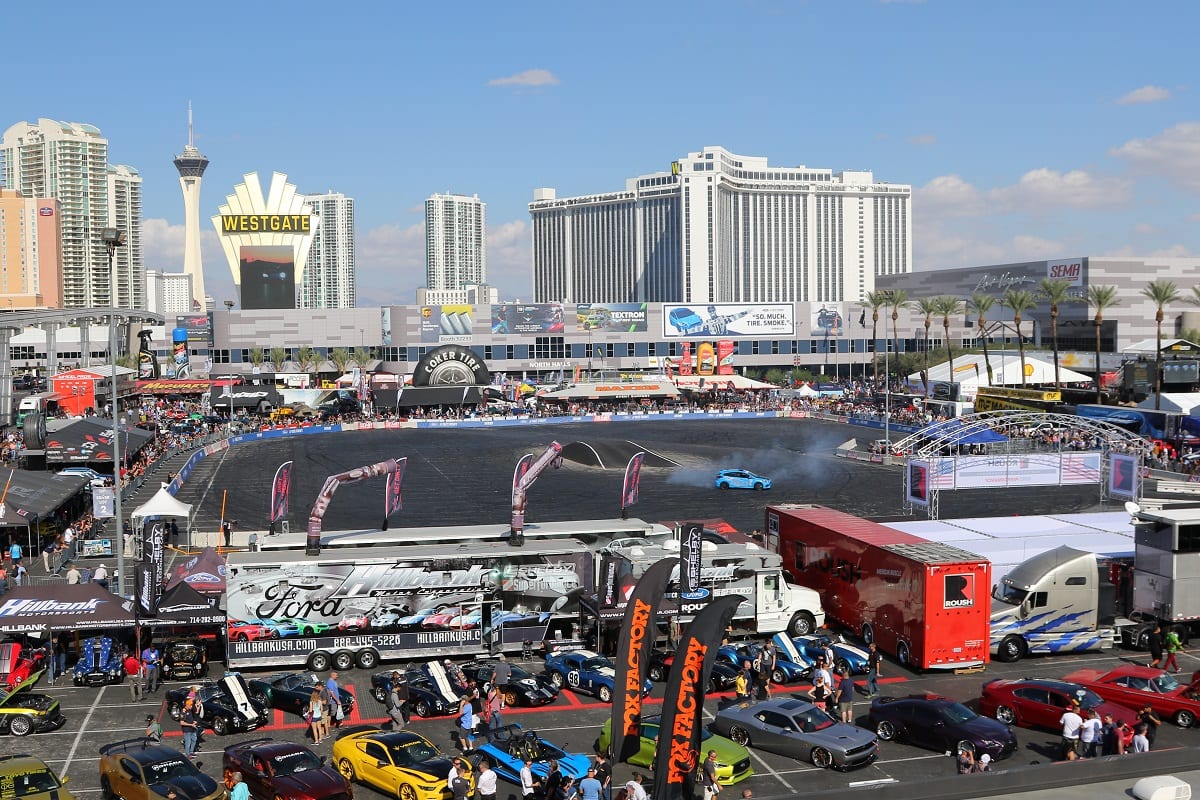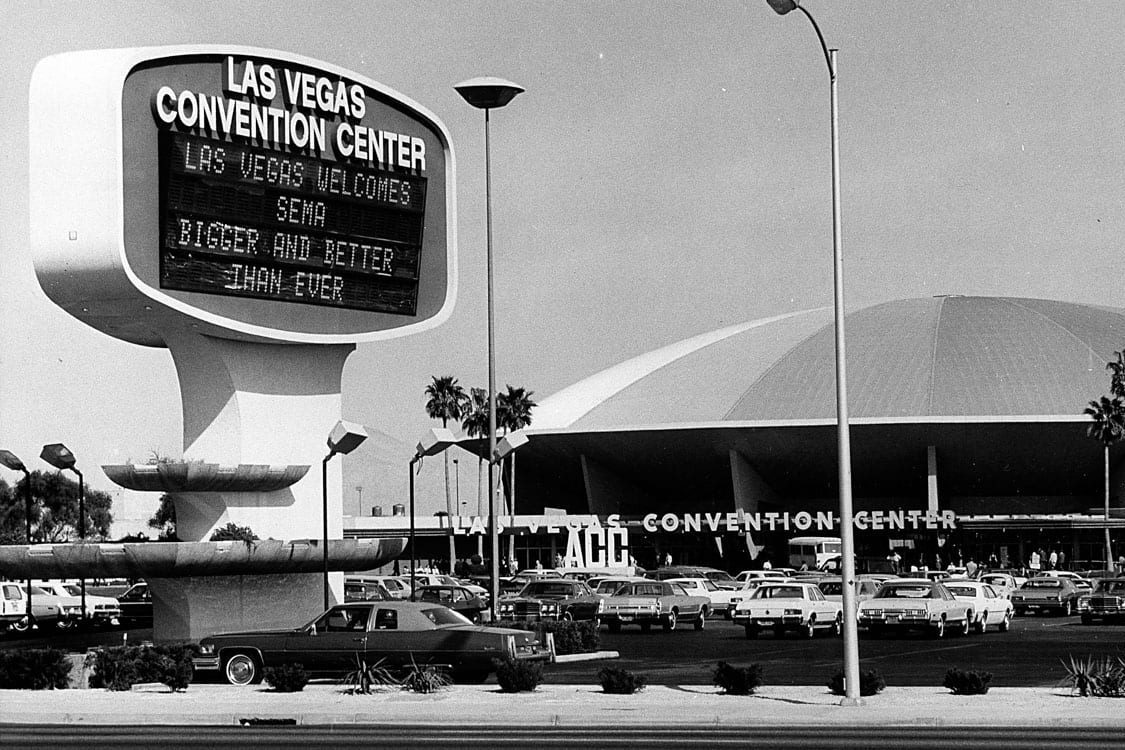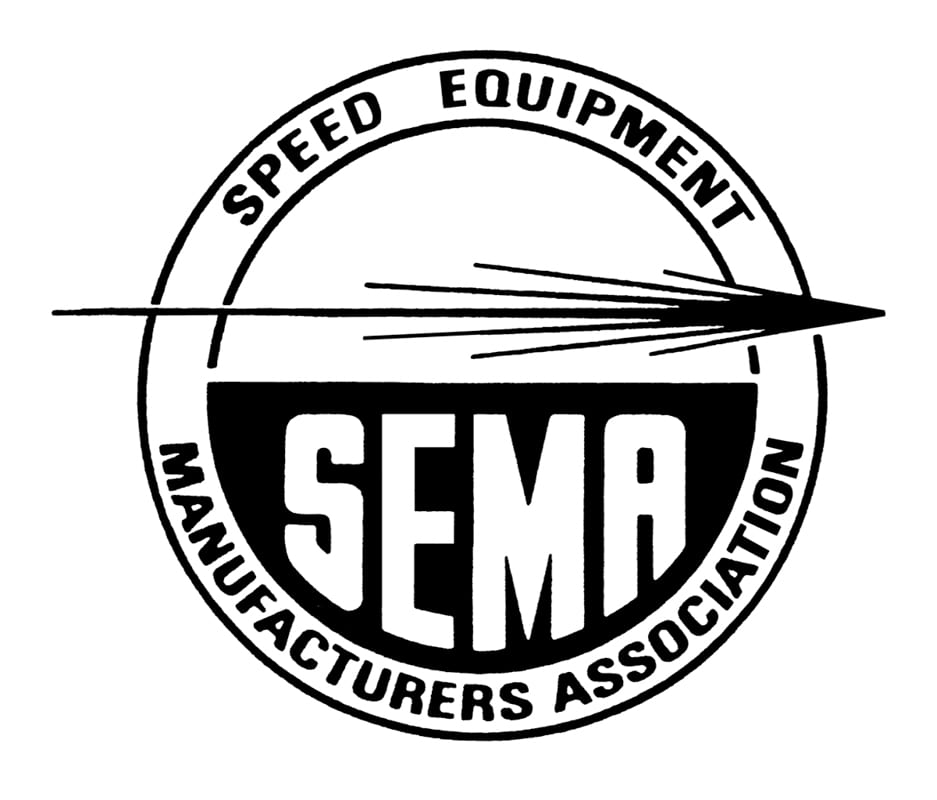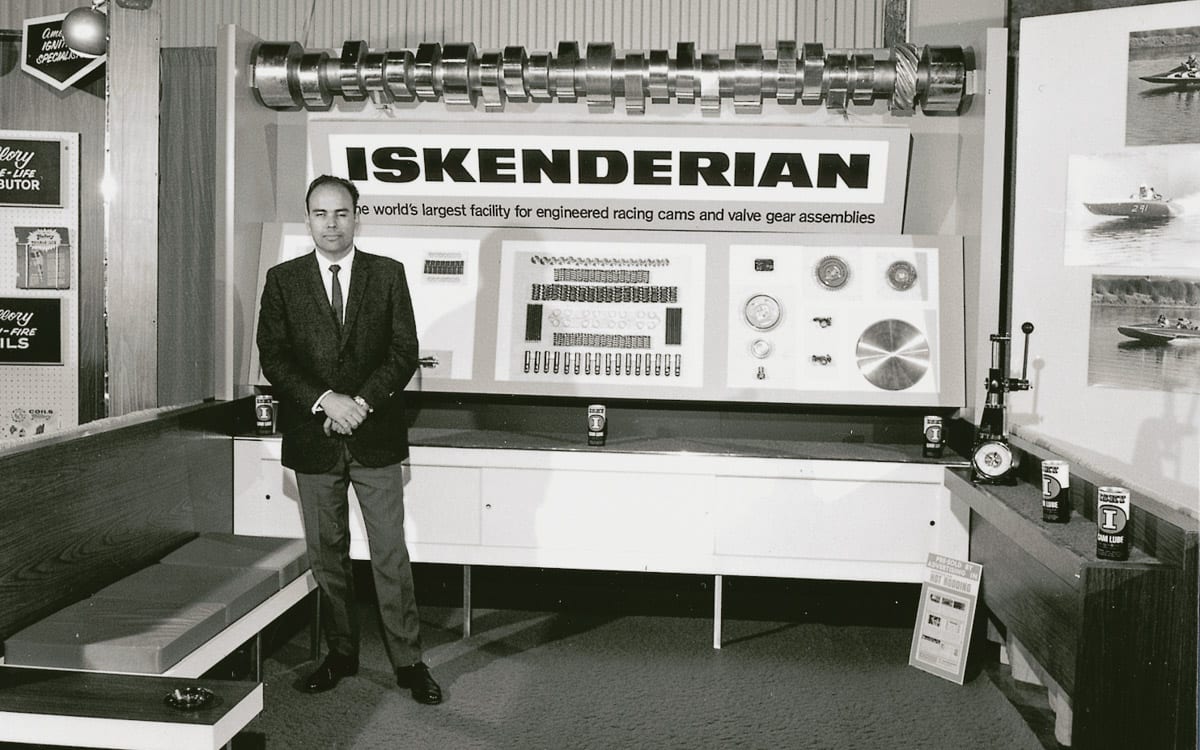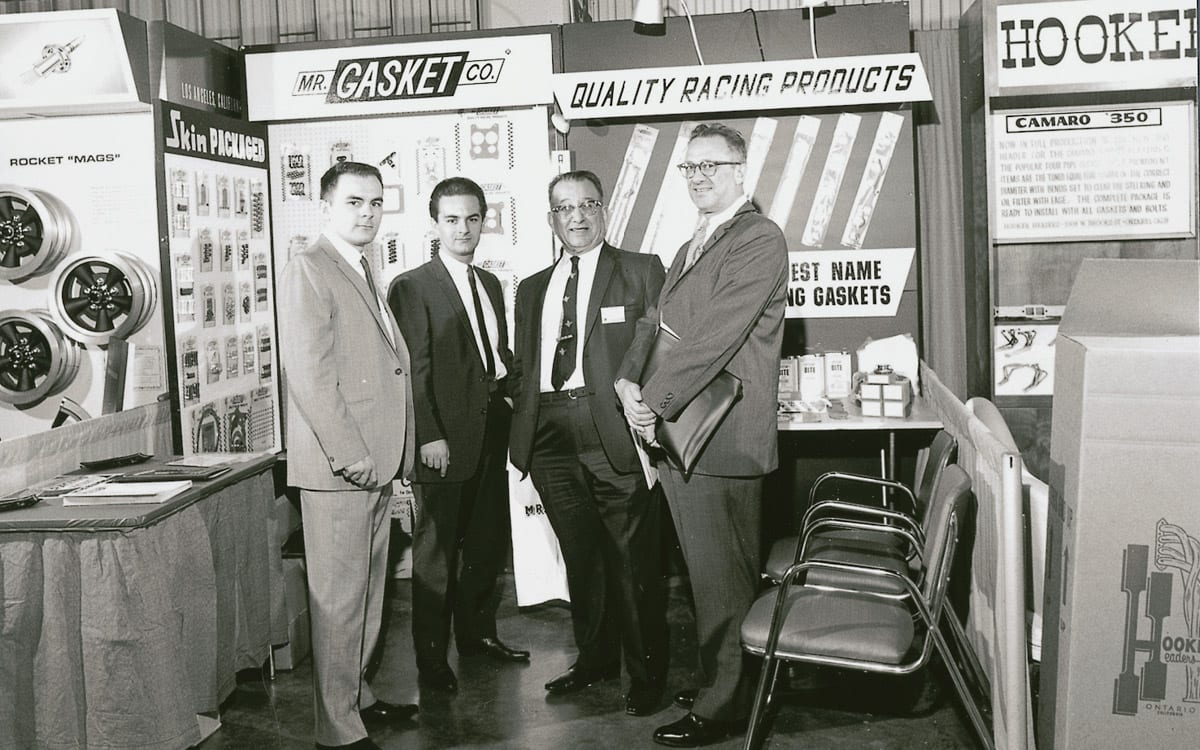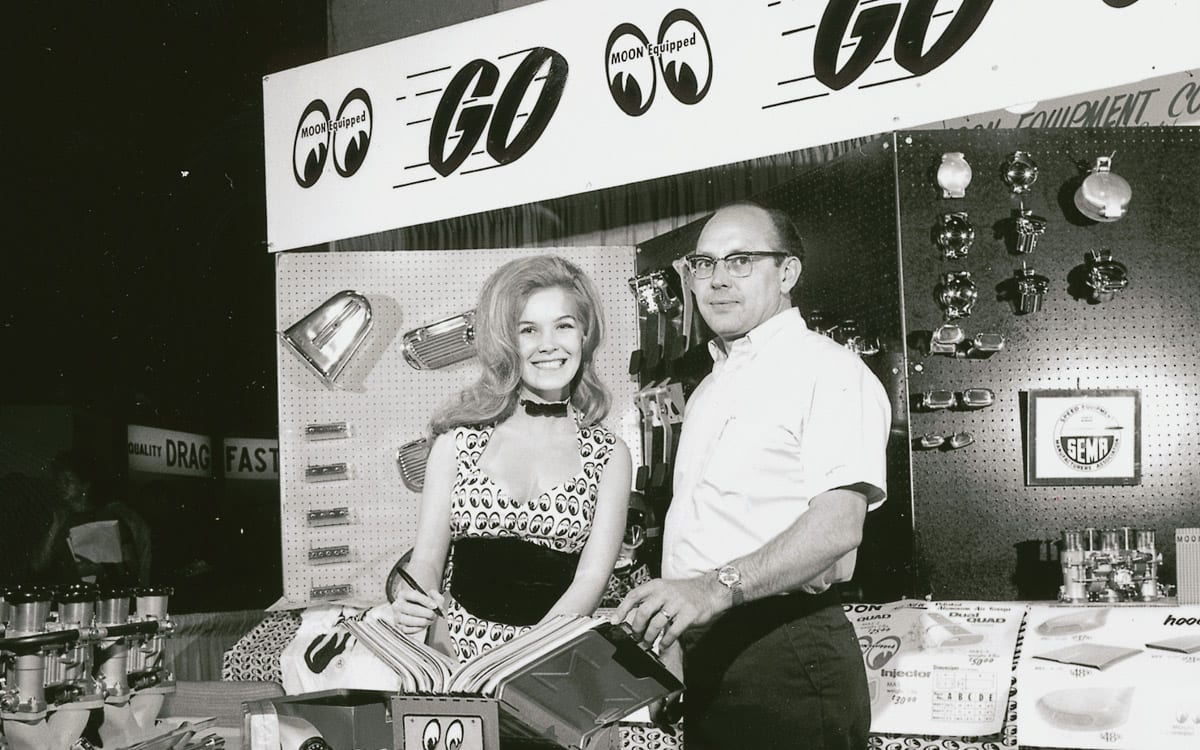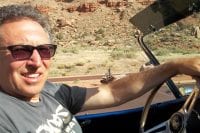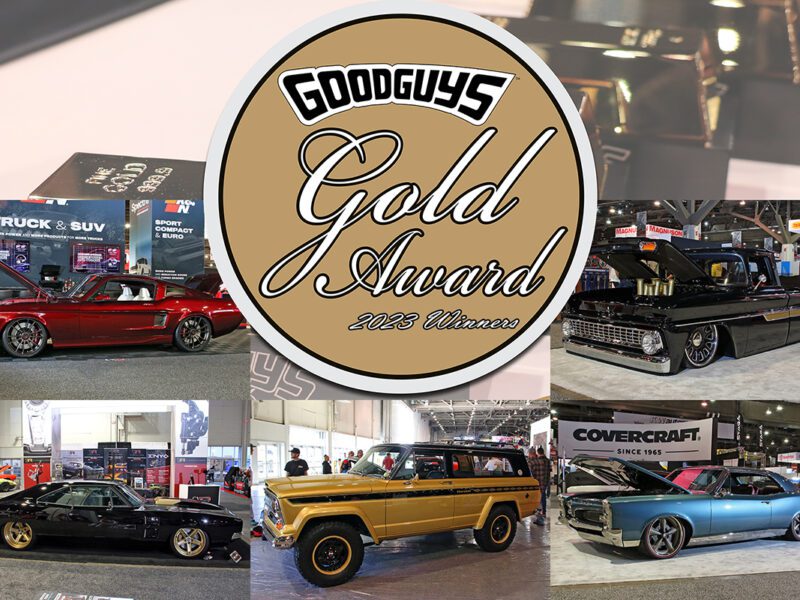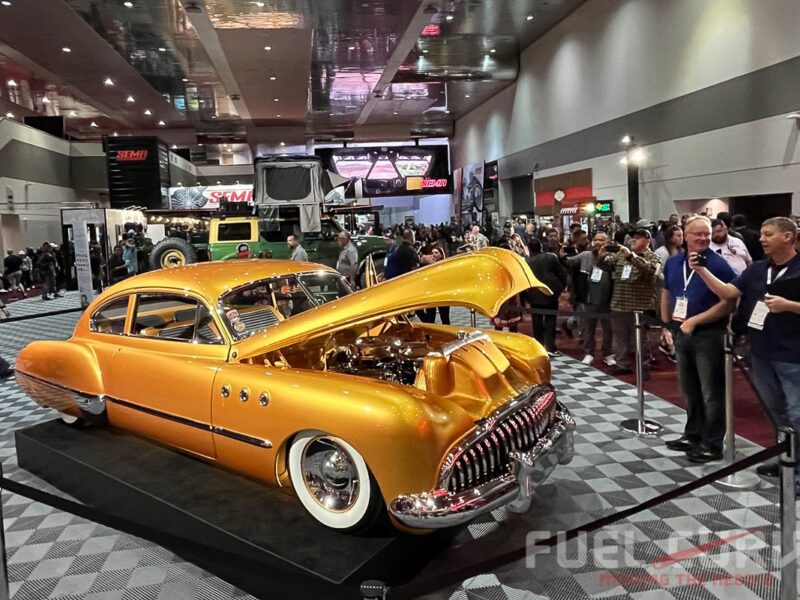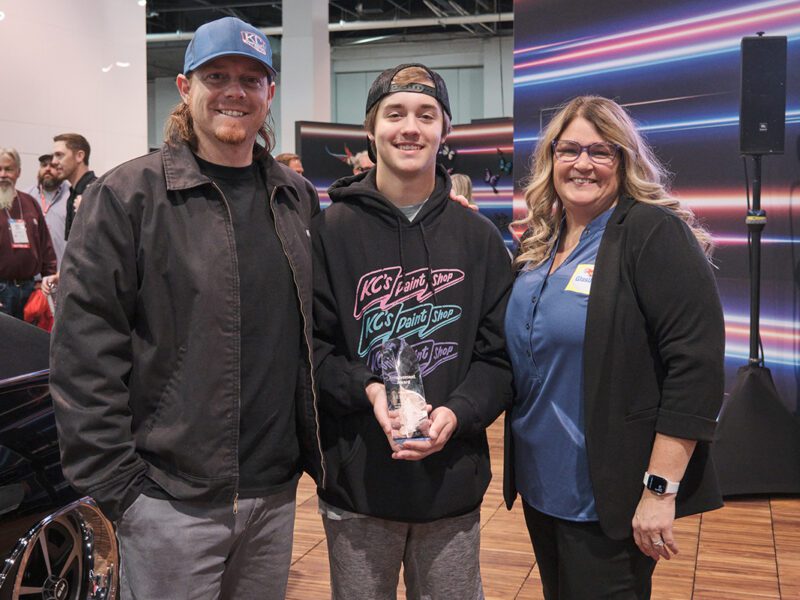SEMA Las Vegas Turns 55 – How Did We Get Here?
About this time of year, many auto industry people from all over the world talk about heading to Sin City for the annual SEMA Las Vegas Show, often billed as the biggest car show in the world. But what exactly is SEMA? It’s the world’s largest performance automotive trade show and it literally swallows Las Vegas with motor-minded people, their magnificent machines and the tools they need to hop them up. How did all this happen? Passion and vision, that’s how.
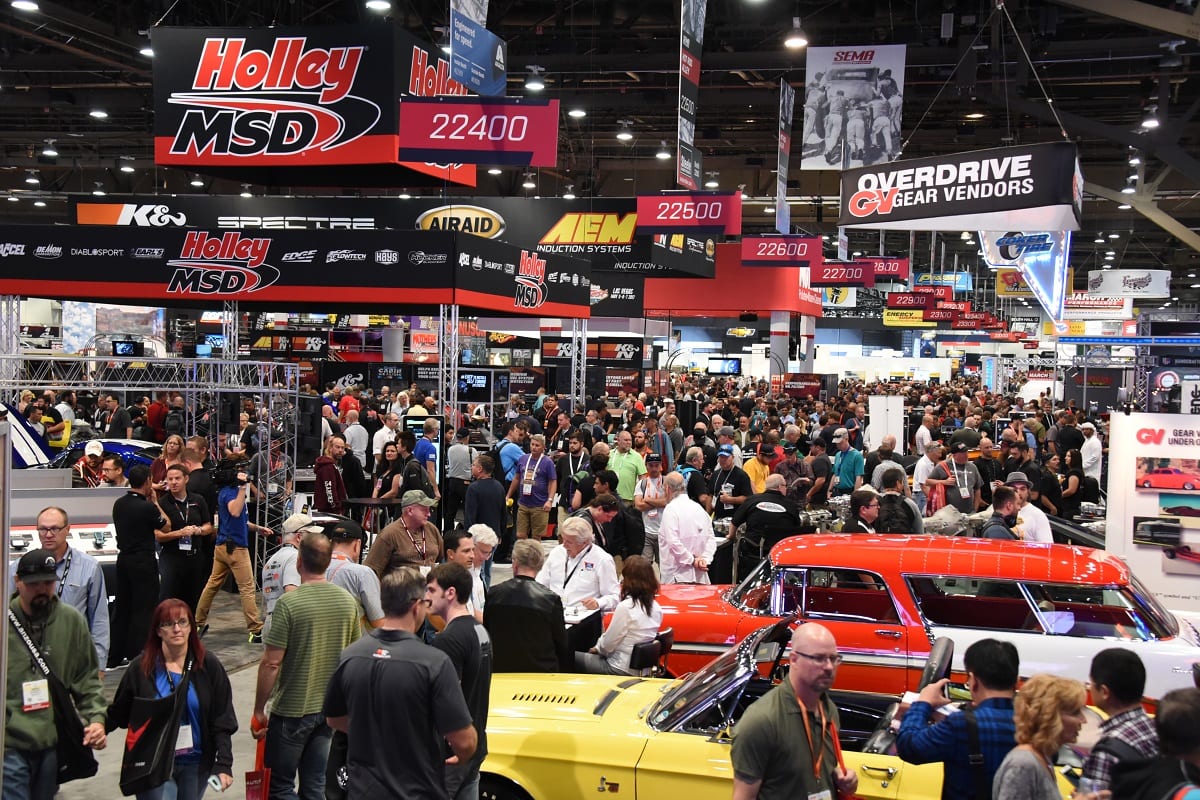
Folks have been modifying and racing automobiles since they were invented. The Indianapolis Motor Speedway, for example, was built in 1909. Other locations with an auto racing connection included Daytona Beach, perfect for land speed records, likewise the Bonneville Salt Flats, Utah. California, meanwhile, had dry lakes and since the early 1920s folks went out there to race. Indeed, in 1932, Phil Berg who was business manager to movie stars Clark Cable and Gary Cooper raced his Duesenberg driven by Eddie Miller against the Mercedes of Zeppo Marx of the Marx Brothers driven by Joe Reindl. The bet was a hefty $10,000 and stock car racer Miller took the win.
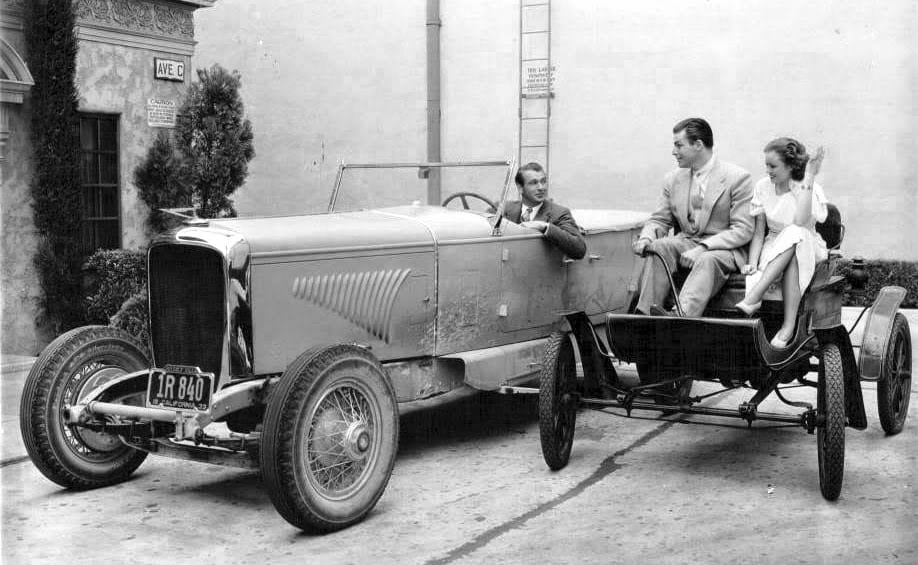
Auto racing wasn’t all big bucks and movie stars though. Almost Everytown, U.S.A., had a horse track that was gradually commandeered by the auto racers who put their Tin Lizzies to the test. Consequently, prior to World War II, there was a very small accessory and speed equipment business primarily focused but not exclusive to the Ford Model T, the A and in 1932, the V8.
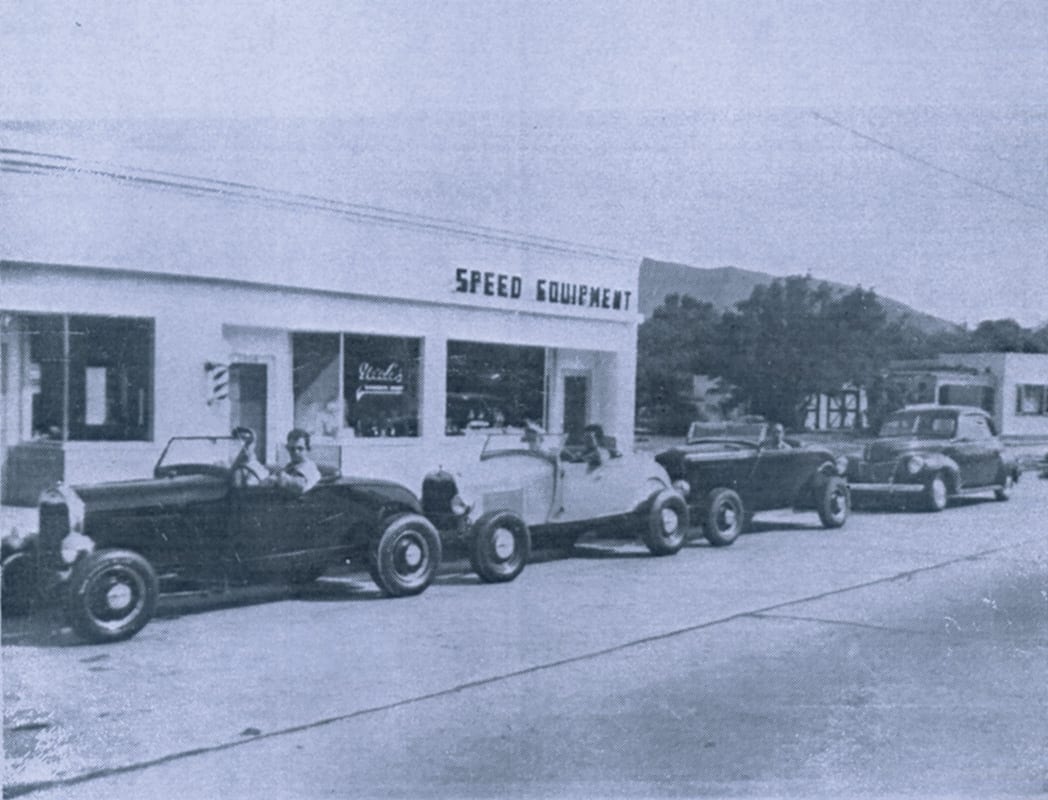
The first west coast speed shop dates back to 1923 when George Wight built a wrecking yard at 3633 Gage Ave, Bell, California. A canny boy, Wight soon recognized a demand for the speed parts he salvaged at Bell Auto Parts. By the time the Model A appeared in 1928 Wight had built a brick building to house his refurbished inventory and the growing number of parts he made.

Meanwhile, on the north side of Los Angeles, Lee Chapel, who also worked in a wrecking yard, likewise recognized a market for used speed equipment. In 1933, he took over part of the yard on San Fernando Road and sold his parts. An industry was born.
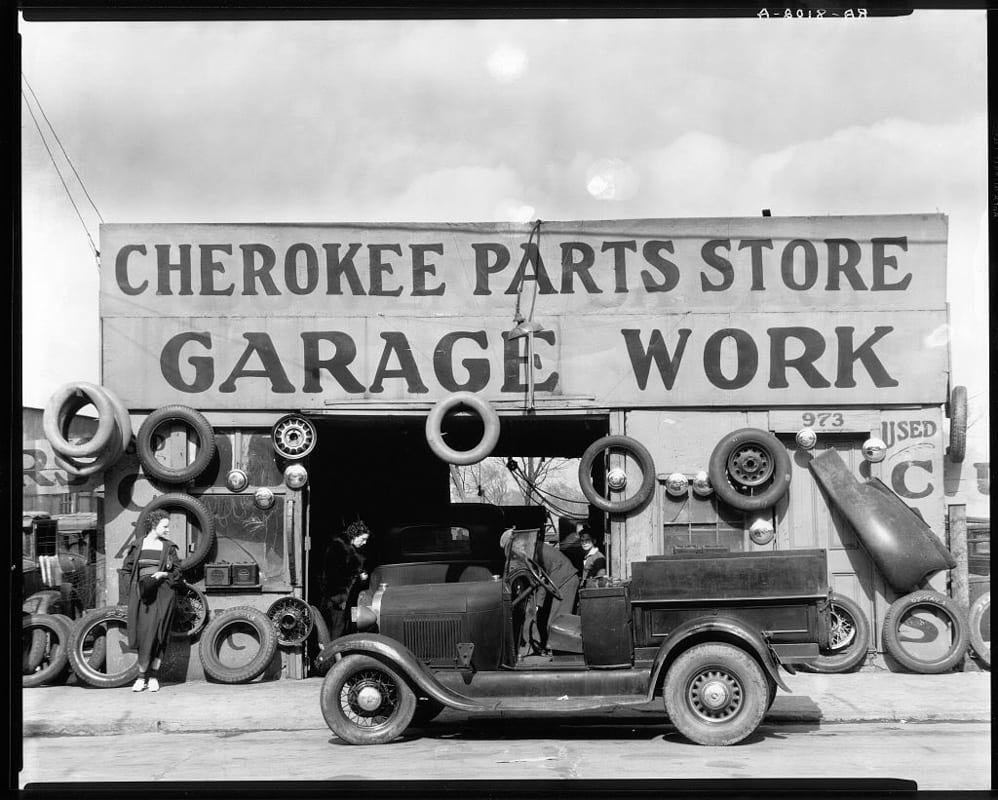
The customers for Wight and Chapel were youngsters hopping up their Flivvers for a weekend’s racing at the dry lakes, five of which were located 100 miles or more north east of L.A. In fact, Wight was one of the organizers but they were an unruly bunch and so in 1937 Wight pulled out and took his timing equipment with him.

It then fell to the various car clubs to form their own group, the Southern California Timing Association (SCTA), to help bring some order to the chaos. Their first meet was held at El Mirage in 1938, by mid-year the SCTA boasted 23 member clubs and on December 1, Wally Parks and Eldon Snapp produced the inaugural SCTA Racing News. Wally, of course, would go on to be editor of HOT ROD Magazine before founding the National Hot Rod Association.

Auto racing boomed and in 1941 Jack Peters, a member of the Road Rebels, published a magazine called Throttle. It reported on west coast motorsports and carried ads from Wight, and speed equipment manufacturers such as Eddie Meyer, Porter, Thickstun and Vic Edelbrock, a name that would become synonymous with the business of speed. Unfortunately, the events of December 7, 1941 put auto racing on hold but Veda Orr, wife of speed shop owner Karl Orr, continued to produce SCTA Racing News and mail it to enthusiasts in the military.
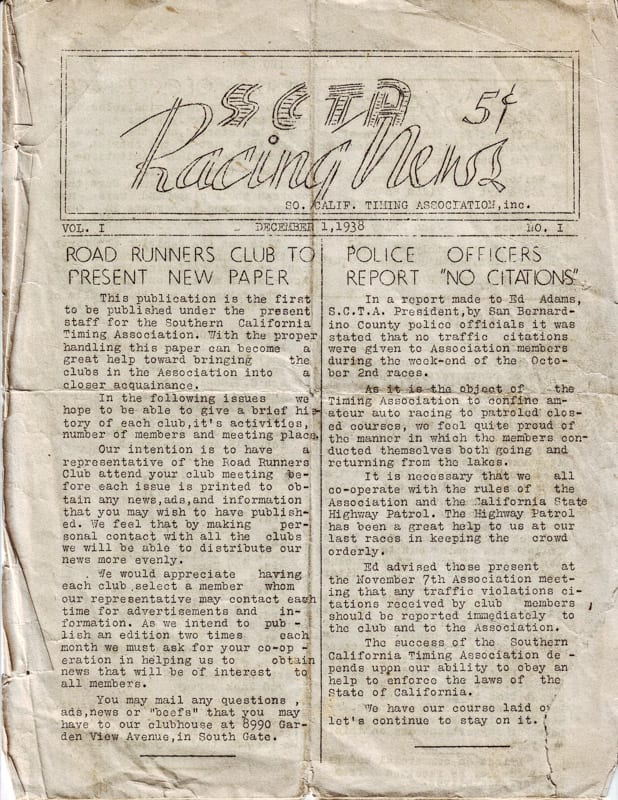
As the saying goes, boys will be boys and when the War was over, returning service personnel looking to continue the excitement of action embraced motorsports of all kinds. The gold rush was on and many used their demob money to start a business. One such was Alex Xydias who used $100 borrowed from his mom to open the famed So-Cal Speed Shop in Burbank in 1946. There were many others including Earl Evans, Ted Halibrand, Ed Iskenderian, Barney Navarro, and Harry Weber—all names that would go on to have a huge impact on the industry.


Meanwhile, another young vet with a big idea was Robert E. Petersen who after serving in the Army Air Corps moved from Barstow to Los Angeles looking for work. He soon found a job as a messenger at M.G.M. studios but quickly moved up to the publicity department. There were cutbacks even then and Petersen found himself allied with a group of ex-M.G.M. employees in a start-up called Hollywood Publicity Associates. They were hired to promote the forthcoming SCTA-sponsored Automotive Equipment Display and Hot Rod Exposition slated for January 23-25, 1948, at the Los Angeles National Guard Armory in Exposition Park. Pete’s epiphany, with then-partner Bob Lindsay, was to launch HOT ROD Magazine to coincide with the show that was really the first show of its kind. The three-day event attracted 55,000 visitors.
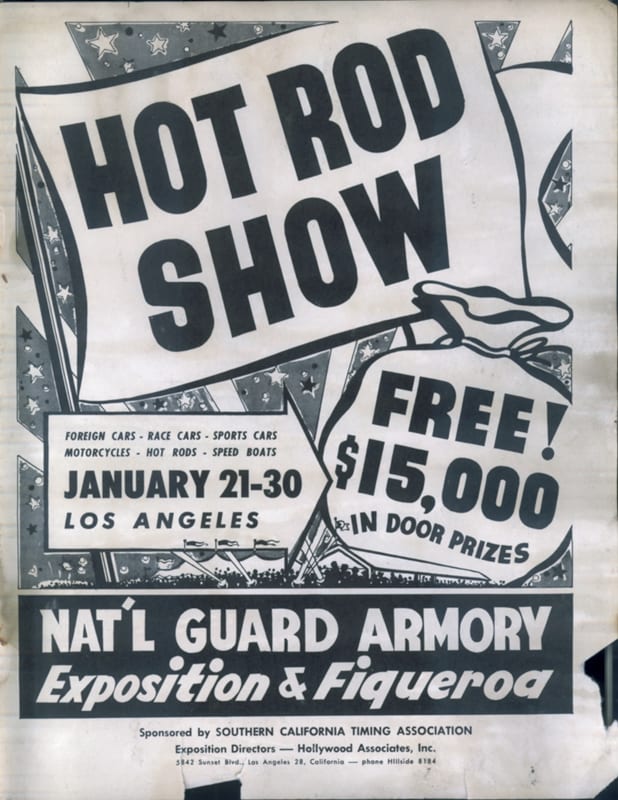

HOT ROD Magazine took off like a rocket giving national voice to car enthusiasts all across the country, even overseas, and it propelled the industry with it. Manufacturers such as Edelbrock and retailers like So-Cal now had a vehicle by which to sell their products nationwide via mail order. And sell they did. “Orders started coming in from all over the country.” Said Xydias. “At night I would take the envelopes home and pluck out the quarters. It was fun. Quarters all over the place.”
Motorsports of every shape and form were exploding from Bonneville and the dry lakes to the drag strips and oval tracks that were springing up all over the country. Fueling this phenomenal growth was Hollywood with movies such as Elvis Presley’s Speedway and TV shows such as 77 Sunset Strip and Route 66.
It was a great time to be into cars big and small because the model industry had seen what was happening and wanting to be part of the action looked at building models of the famous hot rods and dragsters. Henry Blankfort, then VP of public relations for Revell, was asked to put a program together. Blankfort reached out to Bill Neumann, then editor of Petersen’s Rod & Custom and later founder of VW tuner Neuspeed. Neumann introduced Blankfort to various industry people but Blankfort found, to his dismay, that some companies had already signed “exclusive” logo use agreements with another model maker.

Undaunted, in 1960, Blankfort purchased the rights to Dean Moon’s Mooneyes dragster and it was raced as the “Revell Car.” The model kit was a huge success and Blankfort went looking for other suitable projects. Unfortunately, it was soon discovered that dealing with all these different companies to produce the various logos on the real racecars was cumbersome.
At the time, Blankfort was director of the Hobby Industry Association and some industry stalwarts such as Els Lohn, Isky, Moon and others saw that a similar association for the speed equipment industry could be beneficial. Eventually, on January 10, 1963 there was a group meeting at the Revell offices in Venice, California. Representatives of 22 speed equipment manufacturers attended and Lou Glazier, president of Revell, outlined the benefits of a trade association. Eventually Roy Richter, then owner of Bell Auto Parts and Cragar, took a stand for a national association and trade show to present the speed equipment industry as an important part of the automotive aftermarket. That same year the Clean Air Act was passed.
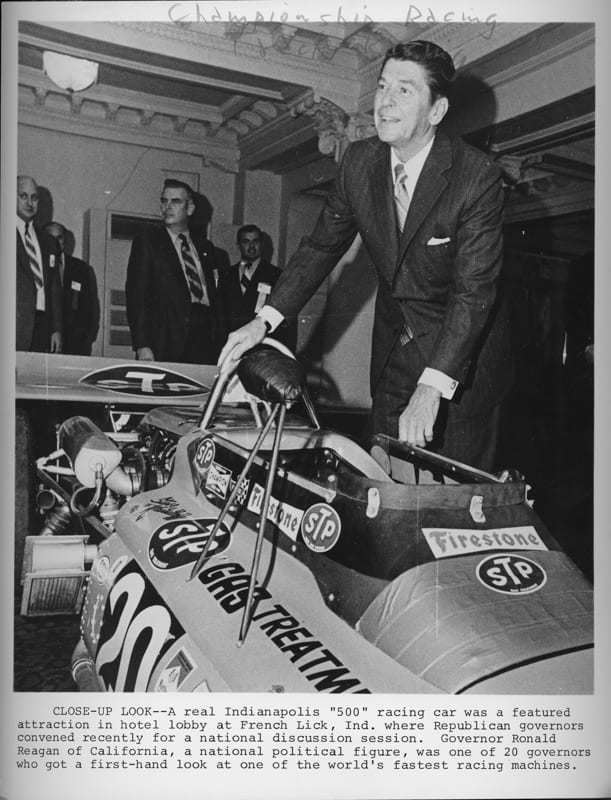
More meetings followed at Dean Moon’s Gay Nineties bar and by the third meeting it was decided that the name of the group would be the Speed Equipment Manufacturer’s Association (SEMA) and Ed “Isky” Iskenderian would be its first president. It wasn’t long before the group felt the power of strength in numbers. The Federal Trade Commission (FTC) contacted a number of manufacturers about their business practices. The newly formed SEMA sent four representatives to Washington and subsequently SEMA appointed its first committee to investigate methods to solve the problem to the advantage of all involved. The FTC subsequently dropped the matter.
An industry trade show, similar to the SCTA’s 1948 exposition but not open to the public, had been on SEMA’s agenda since its inception. In 1965, and again in 1966, industry veteran Noel Carpenter produced his own trade show at the Disneyland Hotel and while not hugely successful it was enough to cause SEMA to approach Robert E. Petersen to co-produce a show under the guise of Petersen’s Hot Rod Industry News magazine. The editor was non other than Alex Xydias, founder of the So-Cal Speed Shop.
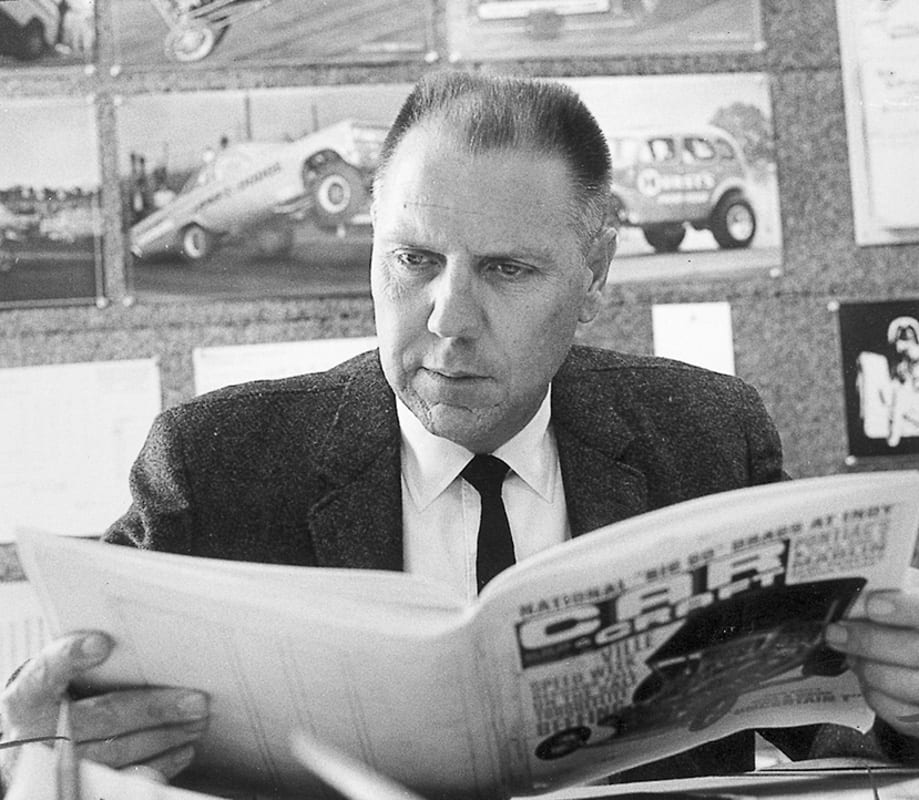
The first show was held under the dank grandstands of Dodge Stadium in Los Angeles. There were 98 booths and 3,000 attendees. The following year the show moved to the newly completed Anaheim Convention center where it flourished along with the industry. Eventually, bursting with 570 booths, the SEMA Show outgrew Anaheim. Meanwhile, the association decided to change its name. Speed became specialty and manufacturers became market, hence the Specialty Equipment Market Association as it’s still known today.
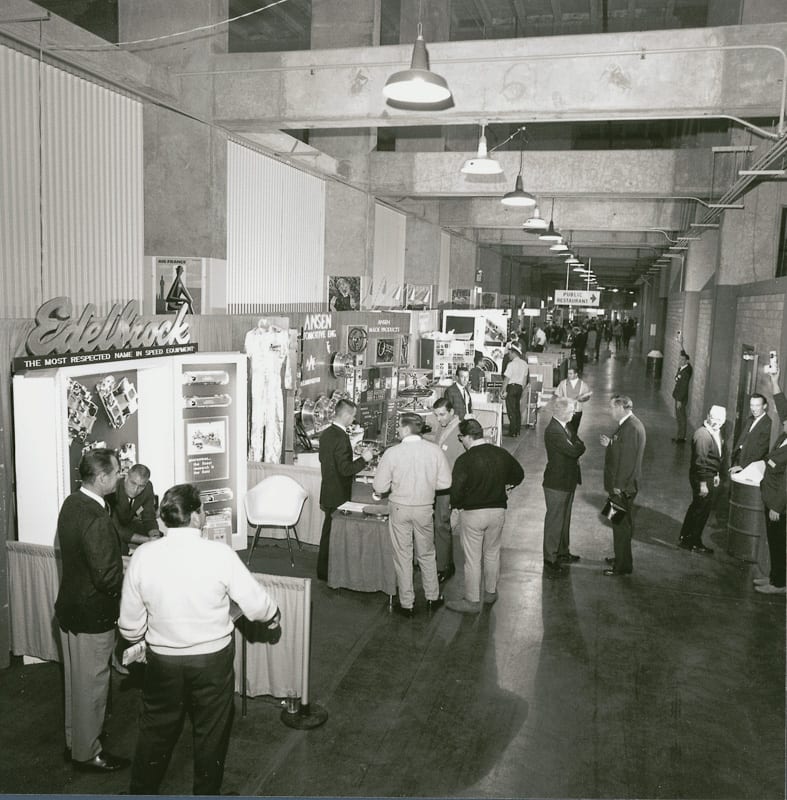

Three years later, in 1980, Chuck Blum became president of SEMA while membership had grown from 36 members in 1963 to 1,750 members. SEMA also began to align itself with other associations, develop its overseas relationships and continue to address negative issues facing the industry. There’s nothing as constant as change and the industry had to contend with major amendments to the 1963 Clean Air Act in 1970, the oil crisis of 1973, and economic recessions in the early 80s, the 90s and, of course, 9/11.
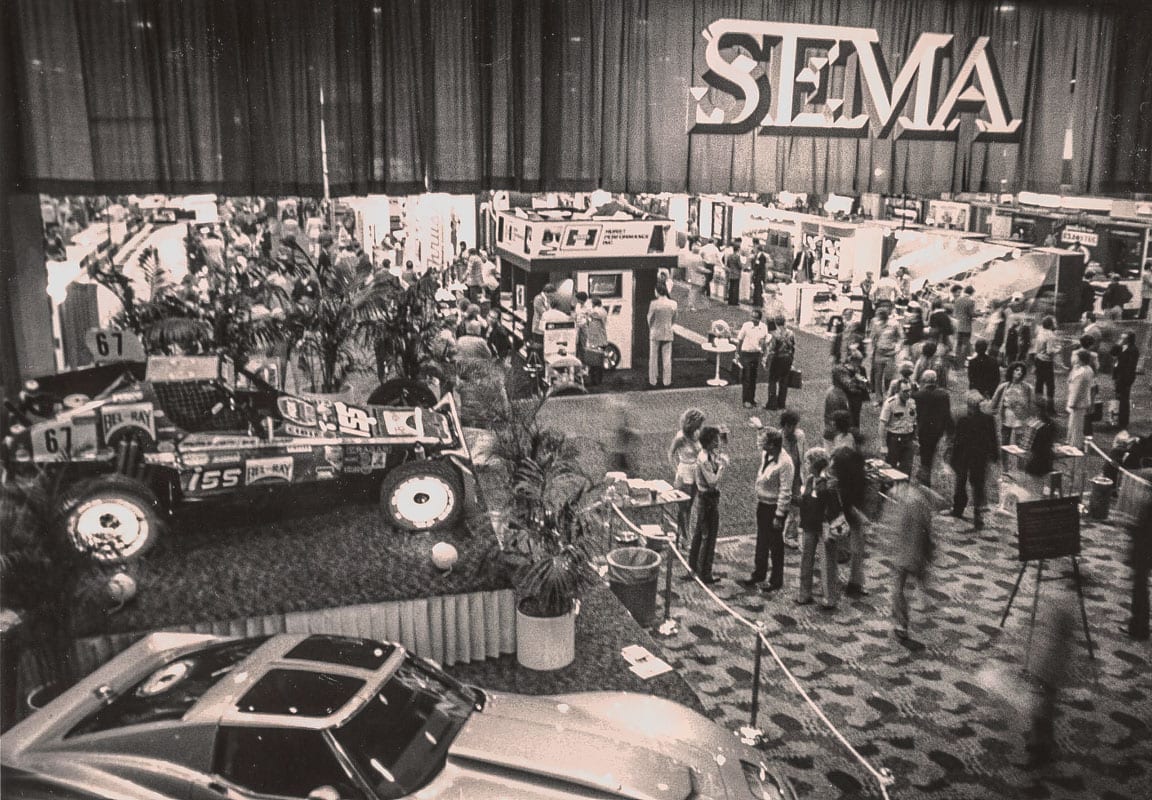
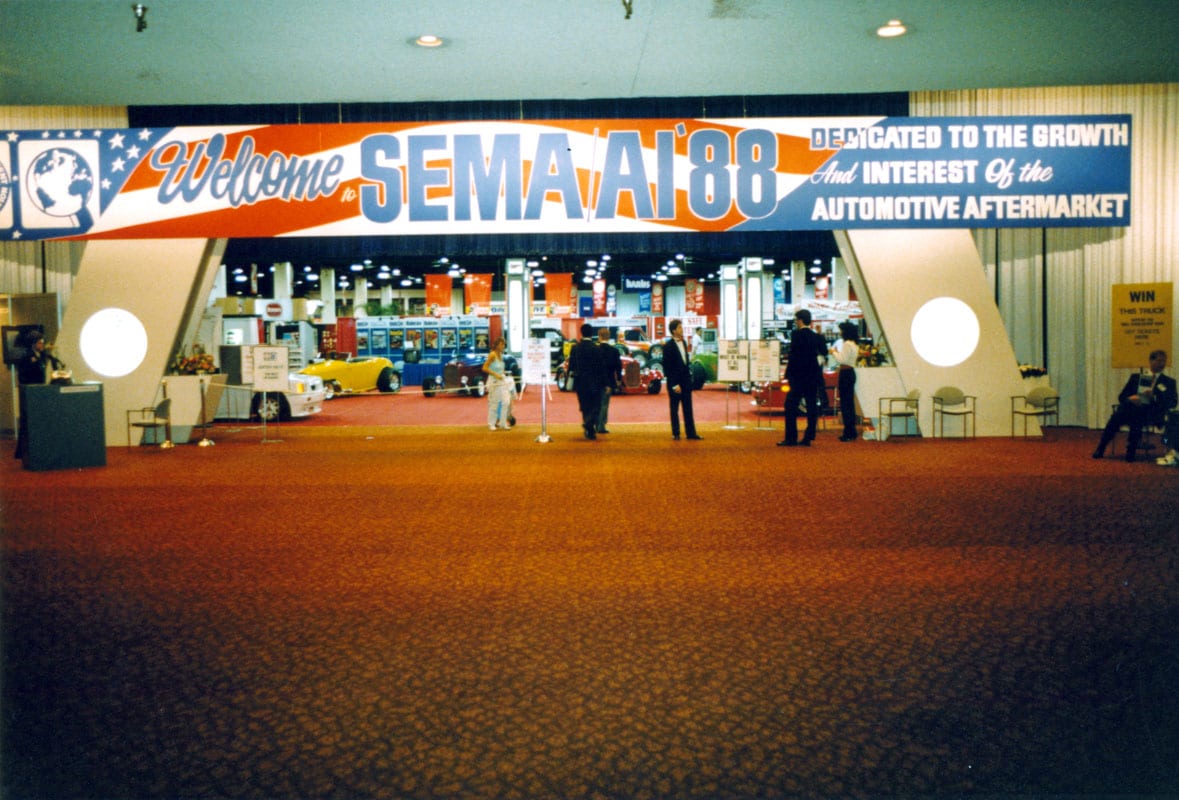

The show, which usually falls the first week of November, came only six weeks after the attacks and nobody was prepared for the devastation. The aisles of the Las Vegas Convention Center, then at almost 2 million square feet, were bereft of buyers especially overseas buyers that had come to make up an ever growing but nevertheless important changing face of SEMA.
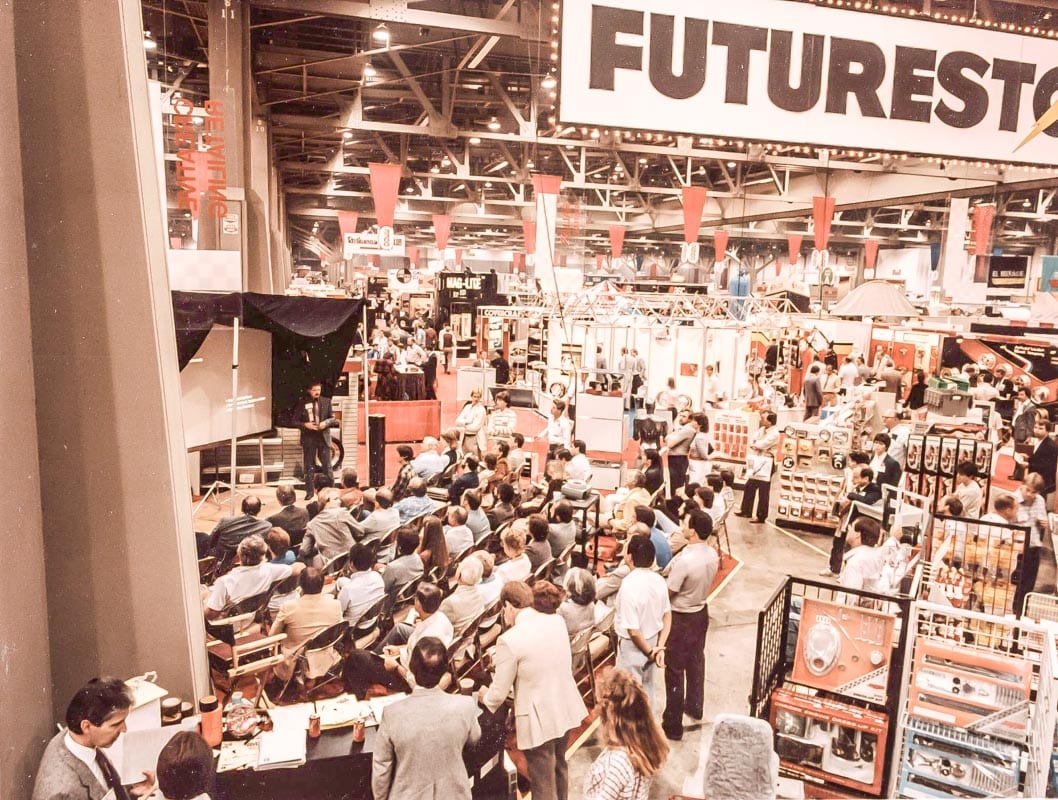
It took some time for SEMA Las Vegas to regain its footing but despite the 2008 recession the association and its trade show continue to grow. This year there will be 2,400 exhibiting companies attracting 162,000 attendees from more than 140 countries. In total, the expo covers more than 2 million square feet, with more than 1,500 display vehicles and 3,000 new products. And, it represents an industry worth a staggering $43 billion. That’s the SEMA Show.
